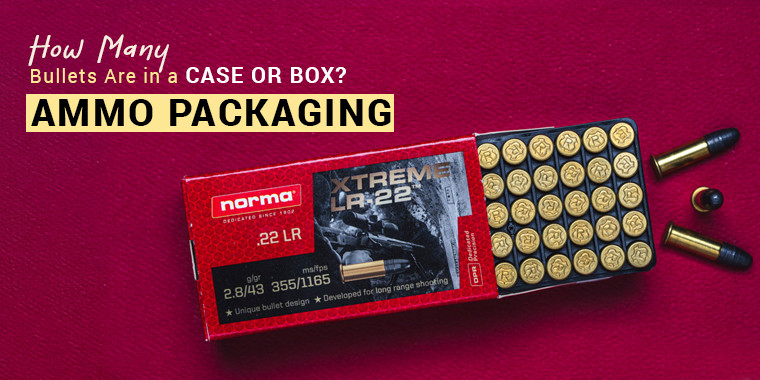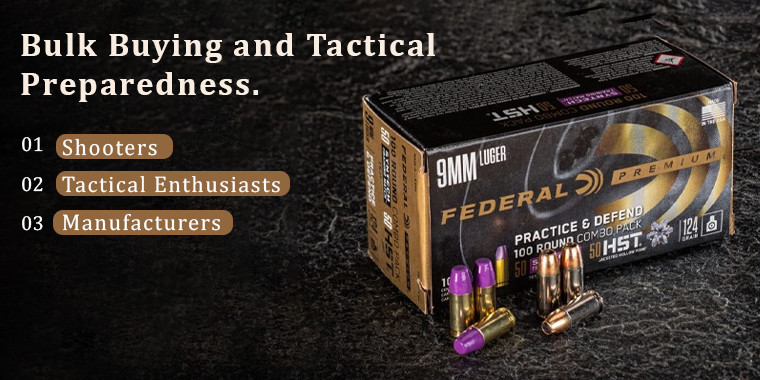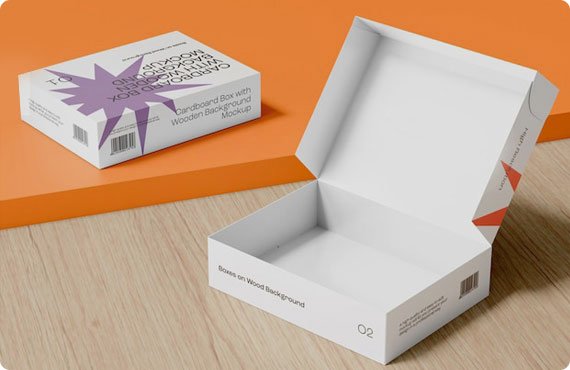October 17, 2025

When you buy ammunition, you’re not just purchasing bullets—you’re investing in packaging precision, safety, and storage efficiency. Whether you’re a competitive shooter, a manufacturer, or a tactical enthusiast, understanding how many bullets are in a case or box can influence your purchasing decisions, logistics planning, and safety preparation.
From .223 Remington and 9mm Luger to .308 Winchester, each caliber follows unique packaging standards that determine how many rounds fit inside a box or a case—and how much it all weighs. Let’s explore ammunition packaging from both the consumer and manufacturer perspectives.
An ammo box typically refers to a smaller retail unit, while a case is a bulk shipment container that holds multiple boxes.
In the USA, the most common breakdown is:
| Ammo Type | Rounds Per Box | Boxes Per Case |
Total Rounds Per Case |
| Pistol Ammo (9mm, .45 ACP, .40 S&W) | 50 | 20 | 1,000 rounds |
| Rifle Ammo (.223 Remington, 5.56 NATO, .308 Winchester) | 20 | 10 | 200 rounds |
| Rimfire Ammo (.22 LR) | 50 or 100 | 10 |
500–1,000 rounds |
These are industry averages—some military contracts specify odd numbers like 840 rounds per metal can, while match-grade or self-defense rounds may ship in smaller 20-round boxes.
Auto Bottom Box Style designs are particularly popular among manufacturers because they combine easy assembly with durability—perfect for shipping pistol or rifle ammo safely.
Weight is influenced by ammo type, bullet grain, and box material. Below is a reference chart from standardized averages:
| Cartridge Type | Weight (per 100 rounds) | Total Case Weight (approx.) |
| .22 LR | 0.73 lbs | 7 lbs (for 1,000 rounds) |
| 9mm Luger (100 gr FMJ) | 2.78 lbs |
28 lbs (for 1,000 rounds) |
| .308 Winchester | 3.49 lbs |
35 lbs (for 1,000 rounds) |
| .223 Remington | 1.94 lbs |
19 lbs (for 1,000 rounds) |
FMJ (Full Metal Jacket) rounds weigh more consistently, while Hollow Points or Boat Tail designs vary due to differing bullet structures.
A metal ammunition can (military-style) typically weighs around 30 lbs empty, while cardboard ammo boxes remain under 1 lb, making them ideal for commercial packaging.
Many people use “bullet” and “cartridge” interchangeably, but technically, the cartridge is the complete round, consisting of:
Different designs—Full Metal Jacket (FMJ), Hollow Point (HP), Boat Tail (BT), or Ballistic Tip (BTip)—affect both accuracy and packaging density.

Buying ammo by the case rather than the box saves cost per round and ensures consistent performance during range training or competition.
Understanding how many rounds are in a case directly impacts preparedness. Whether you’re stockpiling for emergencies or tactical training, knowing that a 1,000-round case of 5.56 NATO weighs roughly 20 lbs helps you plan storage and transport safely.
Balancing protection, branding, and logistics is key. Using custom corrugated packaging ensures your ammunition arrives intact while representing your brand professionally.
Military packaging has long influenced civilian practices. For instance, the U.S. Army uses 10-round stripper clips in bandoliers, totaling 840 rounds per can for 5.56 NATO. These historical specs continue to inspire modern tactical packaging designs for efficiency and organization.
For shooters who go beyond ammo storage, Crate Club offers tier-based tactical gear subscriptions designed for every level of enthusiast:
You can also explore their Crate Club Shop for individual tactical items and ammo storage solutions to complement your packaging setup.
Understanding how many bullets come in a box or case goes far beyond numbers—it’s about mastering your ammunition’s packaging, weight, and functionality.
For shooters, it means saving money and planning range sessions efficiently.
For manufacturers, it means using custom cardboard or corrugated ammo boxes that balance protection and branding. And for tactical professionals, it’s about ensuring every round, every box, and every case supports your mission readiness.
Whether you’re packaging 500 rounds of 9mm or 1,000 rounds of .223 Remington, knowing the structure, anatomy, and storage methods ensures your ammo—and your performance—stay reliable every time.
Find the perfect packaging solutions tailored to your industry niche.
Don't just imagine – experience excellence up close, as you can check our superior craftsmanship before making your decision by ordering your sample kit.
